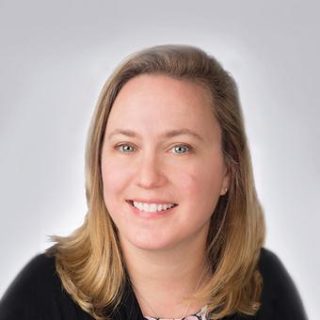MEMBER SPOTLIGHT
Educators can pave the path to equity
By Learning Forward
Categories: Instructional materials/curriculumDecember 2018
Vol. 39 No. 6
Whitney Oakley has worn many hats during her career in education, including some she didn’t expect. After her district began to focus on high-quality instructional materials and adopted new resources, she found herself not only overseeing curriculum decisions and professional learning, but driving a forklift loaded with lesson materials and serving as what she jokingly calls a “literacy therapist.”
Because adopting a reading curriculum was a big shift for teachers and parents, she has devoted hours to building their knowledge and reassuring them that students will continue to read high-quality texts and develop core knowledge. She talked with Suzanne Bouffard, editor of The Learning Professional, about why these shifts were necessary and how they are starting to pay off.
Q: In 2016, your district began a major effort to adopt and support the use of high-quality curriculum. How did that come about?
A: The biggest factor driving this effort was the persistent data that showed only about half of students were meeting grade-level expectations by the end of 3rd grade. It is very important to get students from developing foundational reading skills in 2nd grade to being strong comprehenders in 3rd grade. Not enough students were making this transition smoothly.
We realized that we were focusing so much time and money on intervention resources, and we were really putting Band-Aids on the problem. We recognized that we needed to start focusing more on core instruction and making sure all students had access to aligned instructional materials.
We had also been talking a lot about racial gaps in student performance, and we realized that access to high-quality grade-level instruction is the pathway to equity. We owe it to teachers, parents, and students to make sure the resources are there.
It is a disservice to students to not have some streamlined resources and expectations. We have 126 schools, and we have some students who attend more than three schools in one academic year [because of family mobility].
We also owe it to teachers and students to make sure that job-embedded, sustained professional learning is right there with the materials. This is particularly important because we have more new teachers than veteran teachers. North Carolina is in a teacher shortage crisis, and in Guilford County, when we compare the teachers needed and those who are graduating from university teacher education programs, we are about 250 teachers short.
Q: How did you decide which curriculum resources to choose?
A: We started with EdReports [a nonprofit organization that provides reviews of curricula that are conducted by expert educators], and that’s when we were able to narrow our focus. We realized we don’t need to sit here for weeks with the standards rubric. We can start with the programs EdReports has already vetted.

With that process, we landed on American Reading Company. Initially, we designed the implementation to be in grades 4 to 9 with 3rd grade coming on the following year.
But when Title II funding was in doubt, we were worried about how we were going to plan and carry out professional learning. After the reduction in Title II funding scare at the federal level, we decided that, in order to be fiscally responsible and make sustainable change, we need to go with open ed [open educational resources, which are free of cost outside of printing and professional learning]. So we brought on Core Knowledge for literacy in kindergarten through grade 2.
This year we have added math. Over the course of last year, we had about 250 teachers come together to review math curricula, starting with EdReports as the first layer. We adopted Eureka Math for K-5 and Open Up Illustrative Math for grades 6-8.
Now, for the first time, we have solid, vetted instructional materials from K-8 that are aligned to the standards. Embedded in those materials are major instructional shifts. For example, guided reading is not in the curriculum. We don’t want instruction to be defined by the level of the book a student is reading but instead by a skill gap — for example, how well students understand concepts like phonemic awareness or summarizing.
In math, we are getting away from algorithms. When you and I were kids, we learned math with mnemonics or memorized tricks, but we didn’t know why the concepts worked. In the new curricula, there are no more tricks. You have to have the complete conceptual understanding of, for example, why the order of operations works. These shifts are really hard for teachers, which is part of the reason professional learning is so important.
Q: What professional learning approaches is your district using to support these shifts?
A: In all of our district staff meetings, we emphasize the importance of professional learning. We talk about the research cited in Learning Forward’s Standards for Professional Learning that teachers need about 50 hours of professional learning before even getting started implementing new curricula. Then we ask, what do we have resources to provide beyond initial training?
We make sure that teachers get 16 hours of professional learning over the course of the school year in their own classrooms with their students. We focus on coaching and professional learning communities (PLCs).
When implementing PLCs, we started with the work already established by researchers such as Richard and Rebecca DuFour. Their work emphasizes that PLCs should always seek to answer four essential questions: What do we expect students to learn? How will we know when they’ve learned it? What will we do for students who don’t learn it? What do we do for students who already know this content?
But there’s a fifth essential question that PLCs don’t always address that we felt we needed to add: How will we teach this content? The PLC model is agnostic about curriculum. It doesn’t necessarily address nuts-and-bolts questions like “What should the warm-up to my lesson look like?” or “What is the common product students create?”
Even though teachers have the curriculum resources in their hands, they still have to think through and reflect on their instructional delivery. This is where the autonomy is, the art of teaching. We don’t want to take away the power teachers have. The best PLCs help teachers develop the art of teaching, especially by giving them the chance to watch each other teach.
Even though teachers have the curriculum resources in their hands, they still have to think through and reflect on their instructional delivery. This is where the autonomy is, the art of teaching. We don’t want to take away the power teachers have. The best PLCs help teachers develop the art of teaching, especially by giving them the chance to watch each other teach.
Coaching is very important for this, too. Coaches go into classrooms and work with teachers on the “how.” They provide feedback and model specific strategies. In Guilford County, we contract out the coaching to the different curriculum partners. For example, American Reading Company staff coach teachers on their materials, and Eureka Math coaches support their own resources.
Q: How do you create coherence when teachers have multiple coaches?
A: Having multiple coaches is not a model that teachers are used to, and we don’t want the parts to feel disconnected, so we are intentional about the coordination. The most important thing is the relationship coaches develop with teachers.
People are OK with multiple coaches as long as they like the coaches, feel they are experts, and see the process as supportive and not evaluative. In fact, teachers love the coaching support and not being pulled out to a professional development meeting. This model is finally treating teachers like professionals. It acknowledges that everybody needs a coach. Everybody.
We also create consistency by using similar frameworks from the coaching with PLCs. For example, American Reading Company has a framework that effective implementation requires eight decisions and five prerequisites to successful work. We have adopted that.
One lesson we have learned about coordination is that it is important to have consistency in the way coaches report after the visits. Initially, each partner had reports that looked completely different. We have worked to make them more consistent, because it makes it easier for us to analyze and use them. I wish we had made that consistent at the beginning.
Q: What changes are you seeing so far?
A: We are seeing that teachers appreciate the professional learning and are using it to shift their practices. Based on a teacher survey at the end of the second year of curriculum implementation, teachers rated the effectiveness of job-embedded literacy coaching as a 4 on a scale of 1 to 5.
They particularly appreciated the model lessons and planning sessions during the coaching visits. We are encouraged by the fact that 94% of them requested that coaching support continue in the next school year.
Looking further out, we expect to see improvements in students’ reading performance. As part of the Guilford 2022 Strategic Plan, Goal I states that the percentage of students who will read proficiently by the end of 3rd grade will increase to 63% (it’s currently 53.4%).
We don’t expect to see quantifiable changes for three to five years. But we are looking at key performance indicators as checkpoints along the way and reporting them to the school board, community, and parents.
Q: What are your recommendations for other districts embarking on curriculum adoption and implementation?
A: It is important to have the ability to calibrate goals and expectations. Once you partner externally — or even if you are sending district staff into schools for coaching or observation — you have to be really calibrated on what you are looking for so that all staff and coaches are on the same page about the goal for the first year, for example.
Managing expectations is important, too. We can’t just jump straight to modeling new lessons for teachers and expect they will be able to do it the next day. It all goes back to the 50 hours of professional learning needed to implement well. That’s a lot of hours. It has to happen over time, and with some grace.
Member Spotlight
Position: Assistant superintendent, teaching, learning & professional development
Location: Guilford County Schools, Greensboro, North Carolina
Number of years in education: 16
Why she became an educator: To make school a better experience for students than it had been for her. Although a handful of teachers inspired her, they were not the norm. She eventually became so disengaged that she “finally dropped out of high school with a 4.3 grade point average at the end of my junior year.” Within two weeks, she had completed the credits she needed to go on to a four-year university at the age of 16 to become a teacher. She later became a principal and district administrator.
Most unexpected skill developed in her job: Driving a forklift. Since the district shifted to open educational resources, she says, “The management of materials has been a little crazy” and requires all hands on deck.
Research finding she cites most frequently: “Researchers have found that it can take 50 or more hours of sustained professional learning to realize results for students” (Learning Forward, 2011).
References
Learning Forward. (2011). Standards for Professional Learning. Oxford, OH: Author.
Learning Forward is the only professional association devoted exclusively to those who work in educator professional development. We help our members plan, implement, and measure high-quality professional learning so they can achieve success with their systems, schools, and students.
Categories: Instructional materials/curriculum
Recent Issues
TAKING THE NEXT STEP
December 2023
Professional learning can open up new roles and challenges and help...
REACHING ALL LEARNERS
October 2023
Both special education and general education teachers need support to help...
THE TIME DILEMMA
August 2023
Prioritizing professional learning time is an investment in educators and...
ACCELERATING LEARNING
June 2023
Acceleration aims to ensure all students overcome learning gaps to do...












